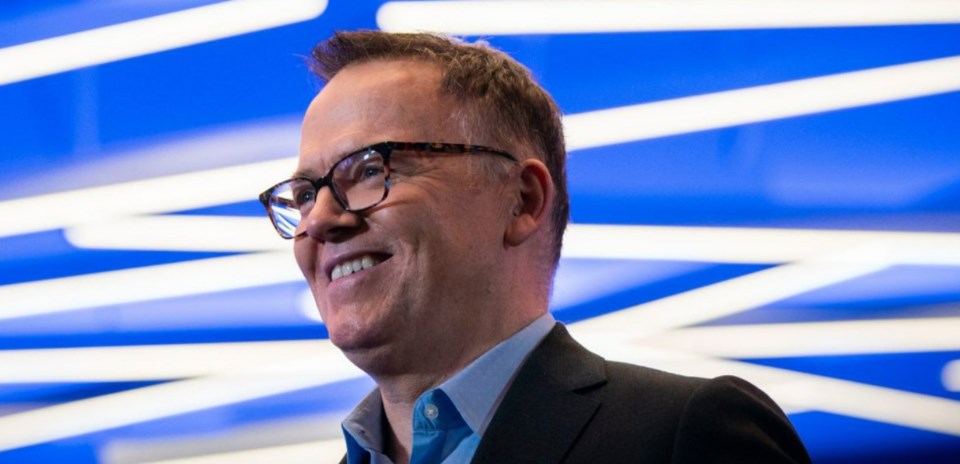Talk about an early election in British Columbia has continued, even if there are no clear signals from the incumbent government that a vote looms.
Earlier this month, Research Co. and Glacier Media found out that more than half of the province’s residents (53 per cent) think it is likely that we will choose members of the Legislative Assembly in 2023.
This includes majorities of respondents who voted for the BC Liberal Party (61 per cent) and the BC New Democratic Party (NDP) (52 per cent) in the 2020 democratic process.
If a provincial election indeed happens this year, 28 per cent of British Columbians expect a BC NDP majority, while slightly fewer (25 per cent) predict a minority. Fewer British Columbians believe the BC Liberals or BC United – if the name change is implemented before the ballot takes place – will form the government with a minority (17 per cent) or a majority (nine per cent).
The BC Liberals have experienced a rekindling with the base in their traditional stronghold of Southern B.C., and the approval rating for party leader Kevin Falcon increased from 36 per cent to 44 per cent . British Columbians who voted for the BC Liberals expect their party to be able to form the government if an election happens in 2023, either with a minority (37 per cent) or a majority (21 per cent).
The BC NDP also had a good start of 2023, with Premier David Eby’s approval rating reaching 59 per cent, and high support for . BC NDP voters are confident in a new victory, with 49 per cent predicting a new majority mandate and 33 per cent thinking Eby will remain premier with a minority.
We may never see the BC Liberal brand on our ballots again. Across the province, 36 per cent of British Columbians say they like the name BC United. The proposed party name is clearly popular for respondents who voted for the BC Liberals in 2020 (62 per cent). Majorities of British Columbians who supported the BC NDP or the BC Green Party dislike the new name (62 per cent and 58 per cent, respectively).
The success of political rebrands depends on how quickly bad memories can be set aside. With this in mind, we asked British Columbians about the leaders that the three main parties have had in this century.
Gordon Campbell, who led the BC Liberals from 1993 to 2011 and spent more than a decade as premier of the province, is a polarizing figure. While 41 per cent of British Columbians have favourable views on Campbell, 40 per cent regard him unfavourably.
Christy Clark, who served as premier from 2011 to 2017, garners a higher proportion of unfavourable opinions than Campbell (47 per cent), while 39 per cent hold favourable views. The gender gap that was present throughout most of Clark’s tenure remains in place after her retirement from public life. Unfavourable views reach 50 per cent among women and 44 per cent among men.
Rich Coleman, caretaker in 2017 and 2018, is viewed favourably by just 22 per cent of British Columbians. The proportions are slightly higher for Andrew Wilkinson, who commanded the BC Liberals from 2018 to 2020 (24 per cent) and Shirley Bond, interim leader from 2020 to 2022 (27 per cent).
Some former leaders of the BC NDP are viewed more favourably. Two in five British Columbians (40 per cent) hold favourable views on Ujjal Dosanjh, who briefly served as premier in 2000 and 2001. Carole James, who led the party in the elections of 2005 and 2009, also garners a 40 per cent favourability rating.
Joy MacPhail, who commanded the BC NDP from 2001 to 2003, is regarded favourably by 31 per cent of British Columbians. Adrian Dix, leader from 2011 to 2014 and current health minister, reaches 46 per cent. All of these numbers are lower than the 64 per cent posted by John Horgan, who served as premier from 2014 to 2022.
The BC Greens have had two leaders who fared better than the rest. More than a third of British Columbians (36 per cent) have a favourable opinion of Andrew Weaver, leader from 2015 to 2020, and slightly fewer (32 per cent) feel the same way about Adriane Carr, who served from 2000 to 2006. The proportions are lower for interim leader from 2013 to 2015 Adam Olsen (23 per cent) and full-time leader from 2007 to 2013 Jane Sterk (18 per cent).
A look at the perceptions of British Columbians on past political leaders provides valuable intelligence on the current state of affairs. While the three current leaders – Eby. Falcon and Furstenau – have an approval rating that is higher than the favourability rating of most of their predecessors, their challenges differ.
Furstenau will have to assemble a party that is competitive outside of 91原创 Island. Eby follows a premier who maintains a favourability rating of 57 per cent among 2020 BC Liberal voters. This cross-party appeal was a key reason for Horgan’s massive victory in 2020. He also faced Wilkinson, whose numbers are closer to Coleman than to Clark or Campbell.
This survey defines a key task for Falcon: How to establish a credible “government-in-waiting” without eliciting any remembrance of past leaders. Given the dismal view that many residents hold about former BC Liberal figures, the name change cannot come soon enough.
Mario Canseco is president of Research Co.
Results are based on an online study conducted Feb. 4-6, 2023 among 800 adults in B.C. The data has been statistically weighted according to 91原创 census figures for age, gender and region in British Columbia. The margin of error is plus or minus 3.5 percentage points, 19 times out of 20.




